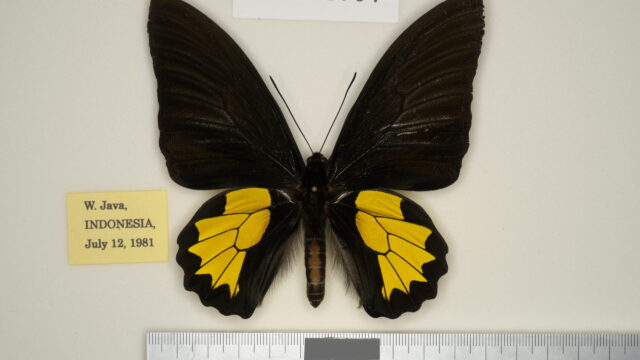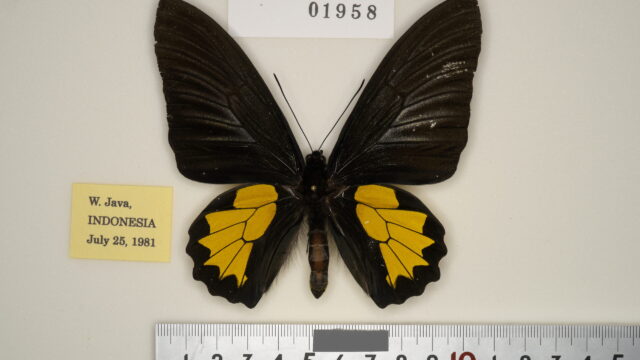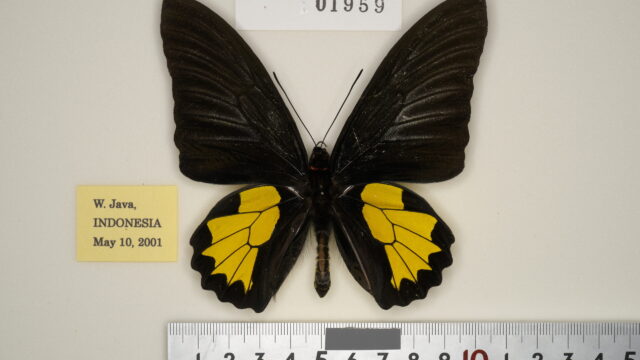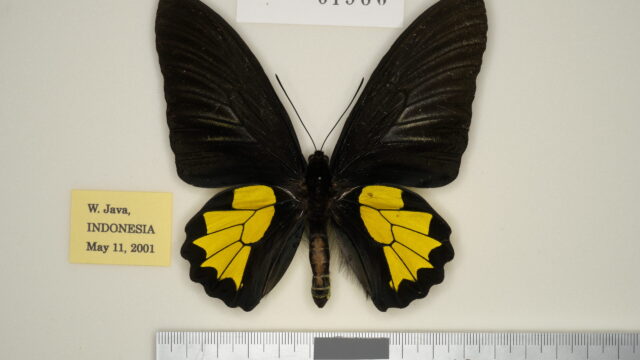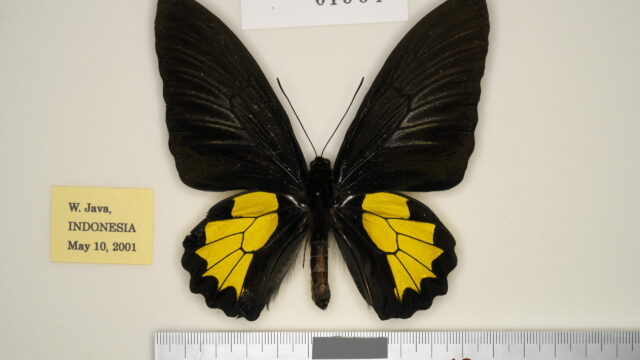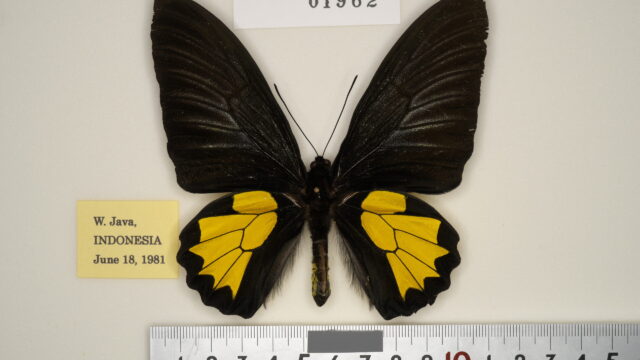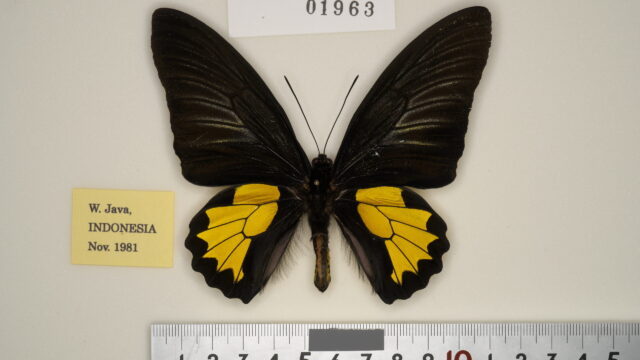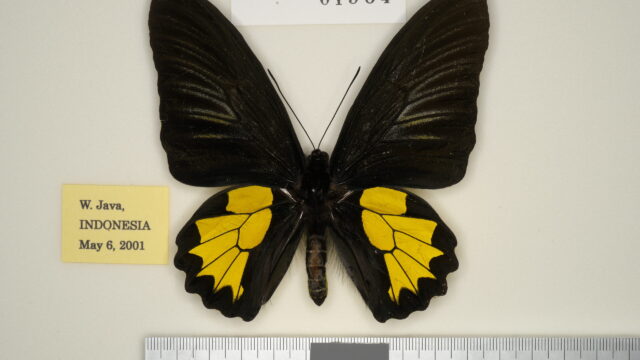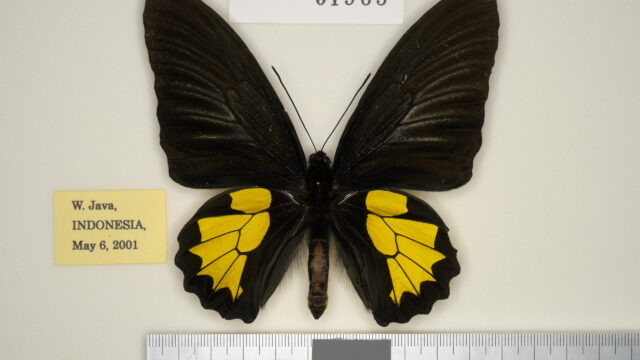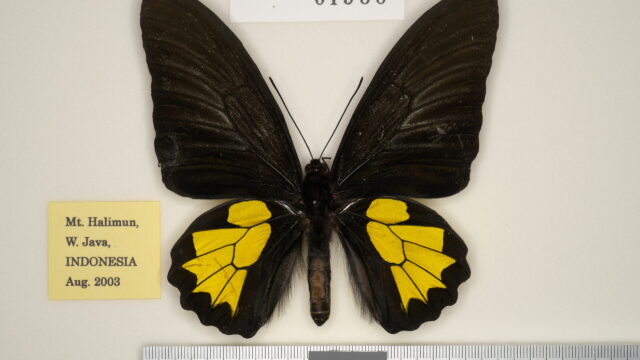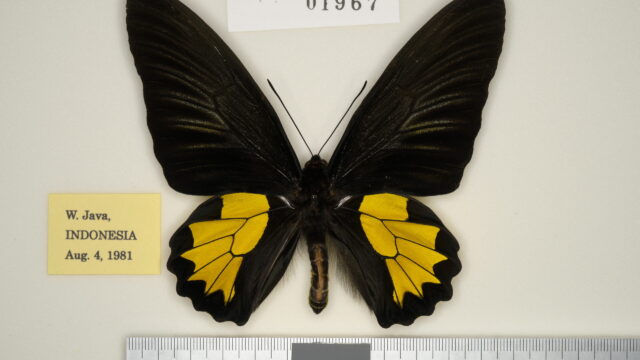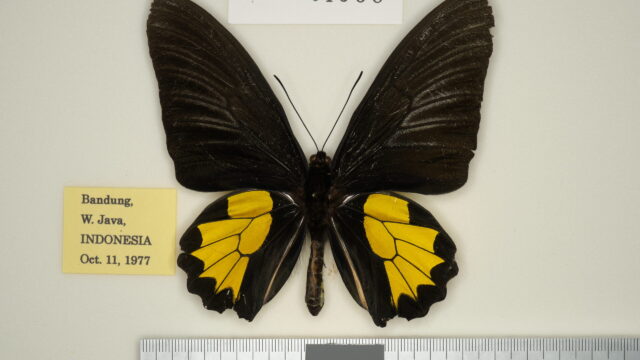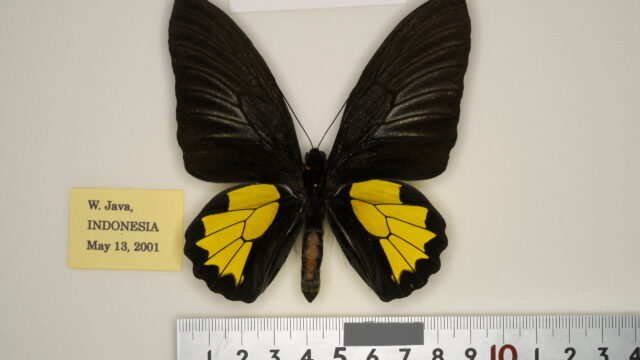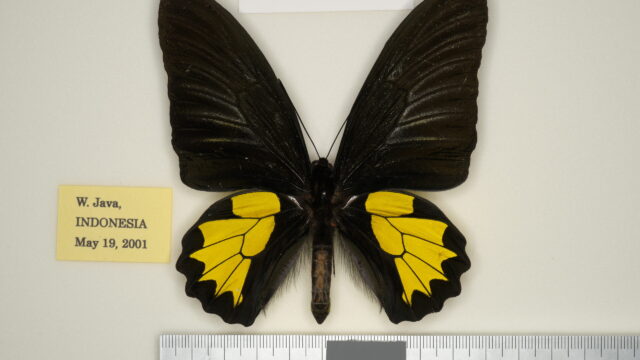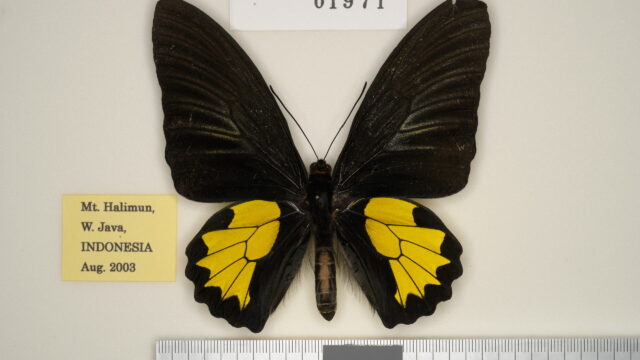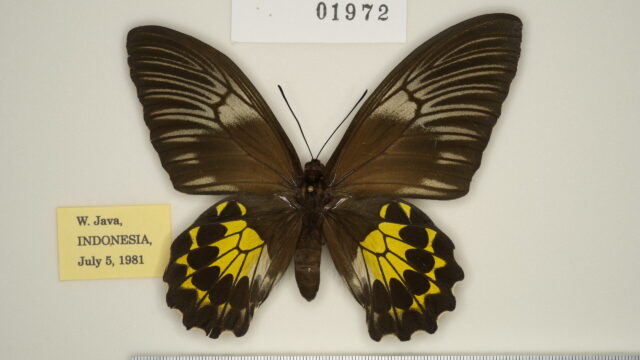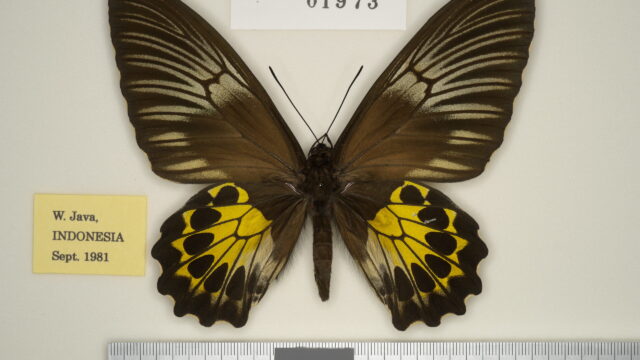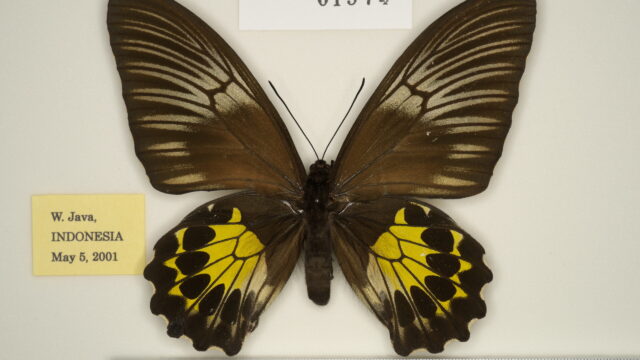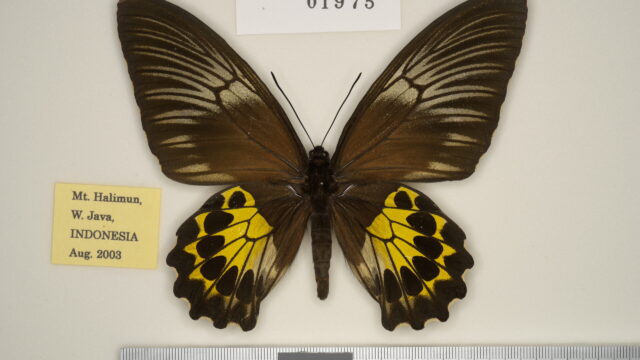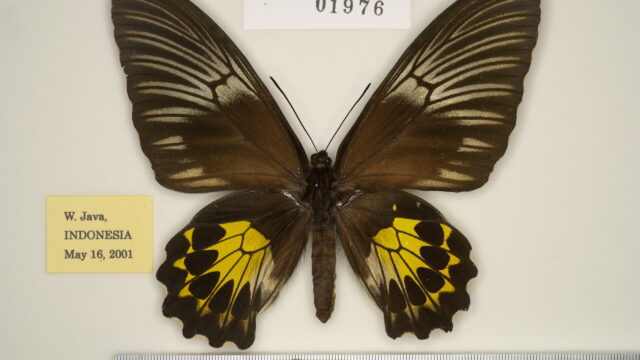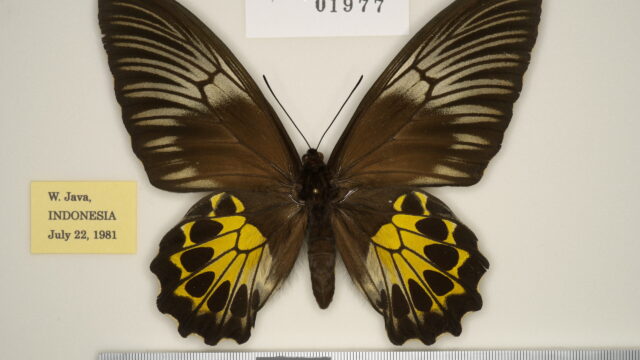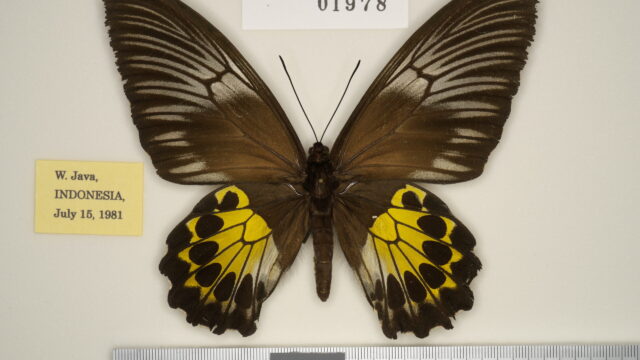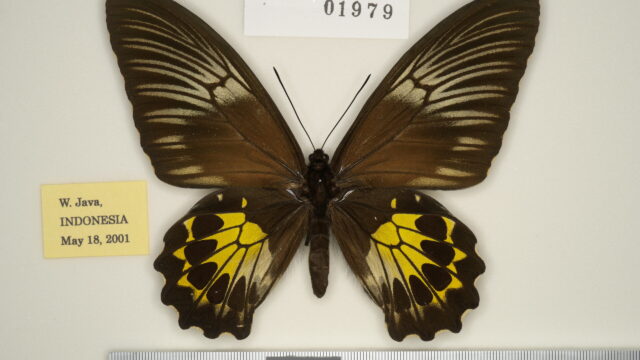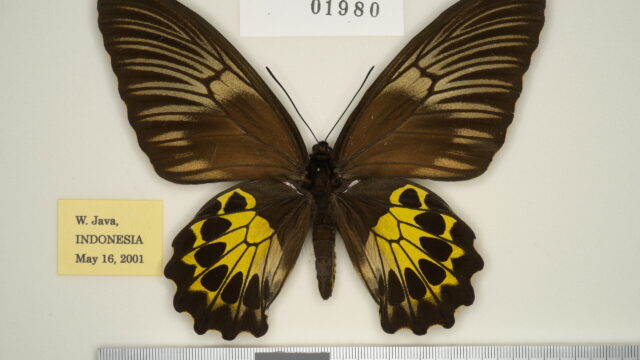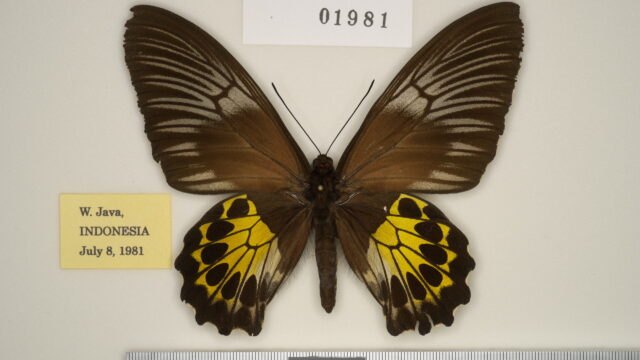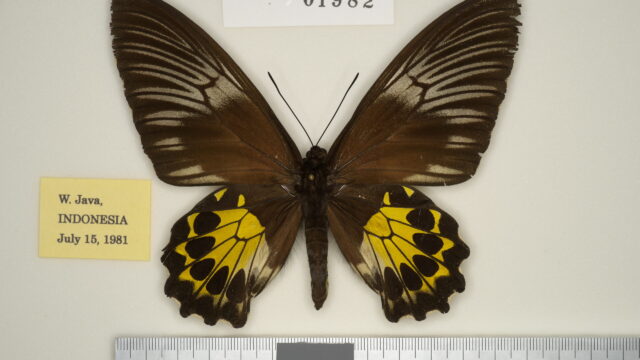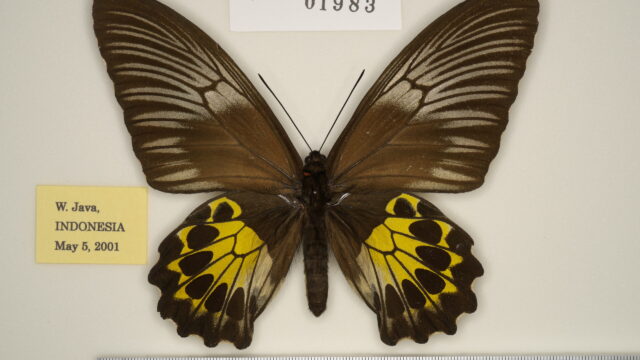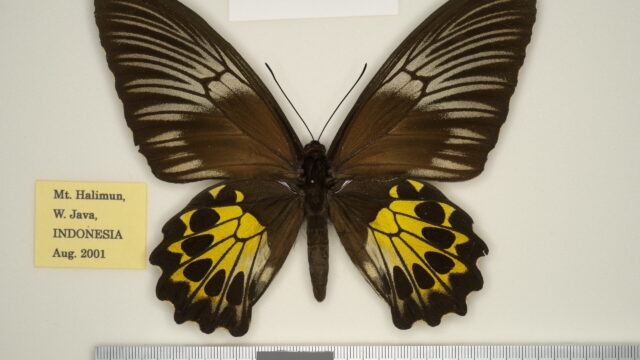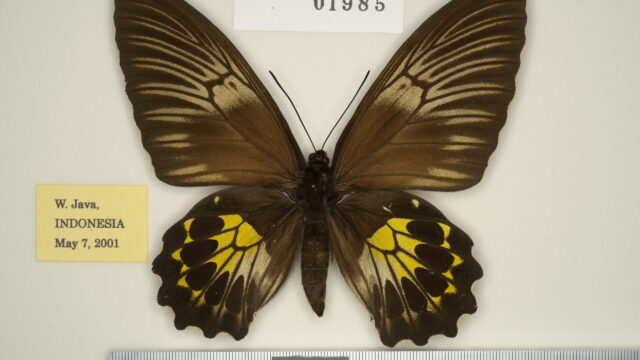3. Ssp. vandepolli (Snellen, 1890)5) [♂, ♀]
(Distribution) [Map 99]
INDONESIA (Java) [W. Java] Mt. Halimun, Mt. Gede, Bandung, Malabar, Mt. Malabar, Pengalengan, Mt. Wayang, Mt. Kancana, Mt. Papandayan, Mt. Mandalagiri, Mt. Guntur.
(Episodes of discovery and original description)
It was first described by Snellen in 1890 as a new species of Papilio, Van de Polli, based on ♂♀ collected at 5000 to 5500 feet in the Preanger Mountains of Java. The species name is dedicated to J. R. H. Neervoort Van de Poll.
(Characteristics)
Smaller and less blackened than the other two subspecies (ssp. honrathiana, ssp. parrottei ) from Sumatra Is.
(Spotted pattern)
♂: The vein-stripes on FW underside are the most distinct of the subspecies. The semi-translucent golden patch on HW with only slight fluorescent-like tinge; the golden spot in the cell is ovoid. On the HW underside, the tip of space 2 has a round black spot surrounded dirty yellow scales like that of ssp. parrotti. The upper surface of abdomen has a longitudinal dark brown sex-brand, and the underside is yellow with two rows of black spots. From these different points, it is easy to distinguish it from other subspecies.
♀: The ground color of FW is dull dark brown with broad and grayish white vein-stripes. The cell-spot is uniformly grayish white not M-shaped. The yellow patch of HW is paler than in other subspecies and is large due to reduced isolated dark discal spots. The upper surface of abdomen is blackish-brown, and the underside is striped with black and yellow.
